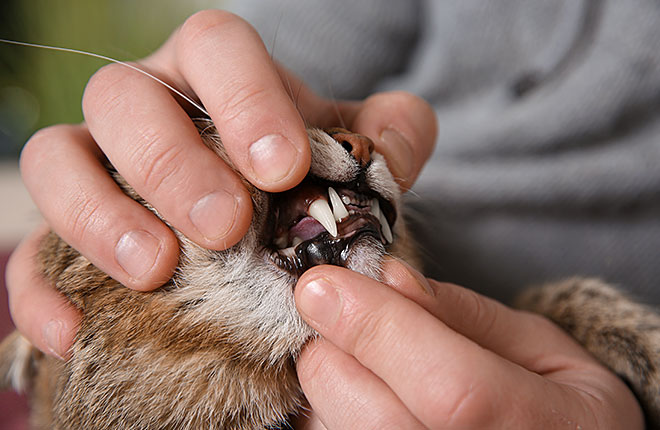Does your cat’s breath smell like an abandoned fish market? Jokes aside, keeping your pet’s teeth and gums clean and healthy can help to prevent periodontal disease and other health problems (beyond bad breath). Learning how to brush your cat’s teeth is just one step to preventing these health problems before they start.
Why You Should Brush Your Cat’s Teeth
Imagine not brushing your teeth for a year and you’ll have some idea of what it’s like being a cat. Plaque builds up and hardens (calcifies) after a few days into tartar, which is harder to remove. And that’s not even counting what can happen under the gum line. Here are a few medical terms that will convince you the importance of brushing.
- Plaque
The sticky, filmy stuff on your teeth (which cats can get, too). - Tartar
The brown crusty stuff that forms on cats' teeth over time. - Periodontal Disease
A serious gum infection that damages gums and can destroy the jawbone.
We get it — you barely have enough time to brush your own teeth. The good news is that brushing your cat’s teeth shouldn’t take more than 30 seconds per day. The more you do it, the easier (and cheaper) dental care will be in the long run.
How Often to Brush Your Cat’s Teeth
Ideally, you’d brush your cat’s teeth every day and have a professional dental cleaning once a year at your veterinarian. If your cat’s gums and teeth are in bad shape or extra sensitive/painful (and if they haven’t had a thorough cleaning in a while), opt for the professional cleaning at your vet office.
What You’ll Need to Brush Your Cat’s Teeth
Don’t try to stick an oversized human toothbrush in your cat’s mouth — find a smaller solution that’s a better fit. Try one of these options:
- A baby toothbrush (with extra soft bristles)
- A sponge toothbrush (you can usually find them in the dental aisle at the store or purchase them online)
- A specialty cat toothbrush that fits on your finger
If your cat hates every brush you try, you can use a clean washcloth or squares of gauze to rub the plaque from their teeth and gums.
Then grab some pet toothpaste (do not use human toothpaste). Pet toothpaste is designed to be safe to swallow, and cats prefer the taste.
How to Brush Your Cat’s teeth

Sit with your cat and rub their face, cheeks, and around their mouth.
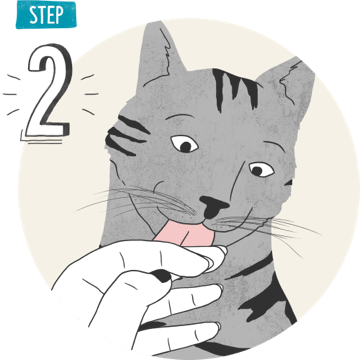
Dip your finger in tuna water or low-sodium chicken broth (make sure it doesn’t have onions or garlic) and let them lick it off.
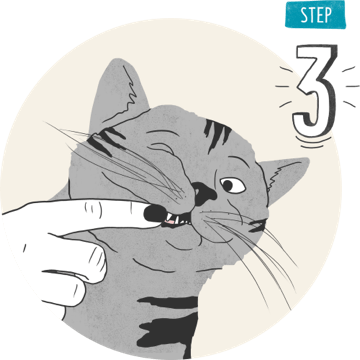
Gently rub your finger along their gums.
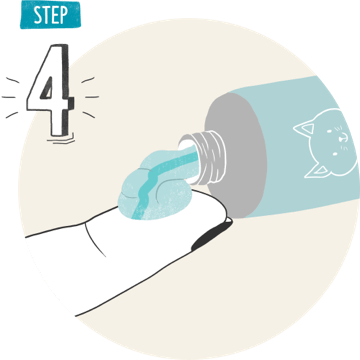
Place pet toothpaste on your finger and let them lick it off, then rub it on their gums as well.
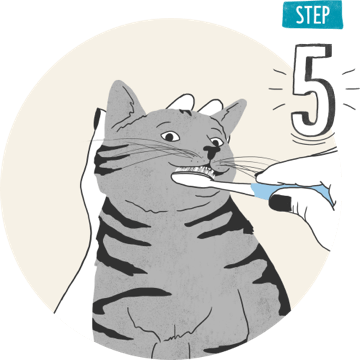
Place the toothpaste on a toothbrush and very gently brush a few teeth. Lift their lips to expose the front of their teeth.
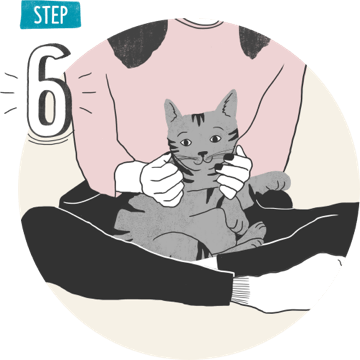
If your cat is okay with this, continue to brush all their teeth. If not, brush a few teeth at a time, taking cuddle breaks in between.
Dental Treats for Your Cat
Some dental treats can help keep your cat’s teeth clean between brushings. These work by scraping off and/or preventing the formation of plaque and tartar. When shopping for dental treats, look for a VOHC Seal of Acceptance or ask your vet for recommendations.
By three years of age, most cats will have some form of mild-to-moderate dental disease that requires a comprehensive oral examination and treatment performed under general anesthesia. Ask your vet to give you the details on your cat’s teeth during their annual wellness visit. Proactive dental care can decrease risk of other medical conditions (like heart disease, sinus infections, and renal disease), and can contribute to a longer life together with your cat.
ZPC-00529R2
